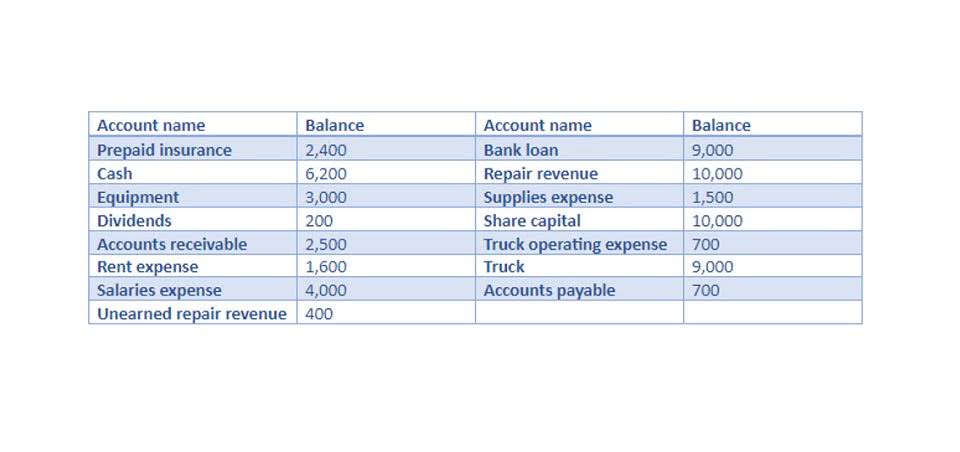
A month-end close checklist outlines all the important steps a company needs to take in order to achieve an accurate and timely month-end close. A checklist is the ideal way for businesses to approach the month-end close process as it enables them to be more strategic and achieve a faster close. The first step in the month-end close process is to ensure that all the financial data for the month is collected and uploaded on the accounting system.
Step 4: Create and review financial statements
There are also steps, like using a month-end close checklist and leveraging automated accounting solutions, that companies can take to accelerate the month-end close process. The following month-end close checklist lists down all the steps a company needs to take to generate accurate and timely financial reports. They consider it a great value, with one customer noting it’s particularly suitable for small business accounting. « Zoho Books is leaner but still powerful, » says Zarina Bahadur, monthly bookkeeping book the founder and CEO of subscription service 123 Baby Box. I can manage invoicing and expense tracking along with automation features for only $20/month without extra unnecessary features. The company’s customer service team answers phone calls when customers reach out.

How do I choose the best bookkeeping tool for my business?

The process of creating, reviewing, and finalizing financial statements at the end of the month is referred to as the end-of-month reporting. It is a crucial process for business from the viewpoint of strategic and financial decision-making, and therefore, should be approached with utter seriousness. Once all the transactions are reviewed and recorded, the next step is to post all the closing entries in the general ledger for the month. With the right tools and methods, the month-end financial close process can be transformed from a time-consuming and cumbersome task to a streamlined one. It’s HVAC Bookkeeping no surprise that accountants often have to work long hours at the end of financial periods. This is because the financial close process requires meticulous attention to detail.
- However, what poses significant challenges for accounting teams are common errors that further makes the process cumbersome.
- A checklist is an ideal way to ensure that you are not missing out on any crucial steps, preventing any potential issues down the line.
- This is done to ultimately create accurate financial statements at the end of the month and review the company’s financial performance.
- The use of advanced technologies however, has made the process much more simpler and efficient by automating tasks such as data entry, reconciliation, and anomaly management.
- Customers find the bookkeeping record book easy to use and understand, keeping them organized and detailed.
Production Manager

This is done to ultimately create accurate financial statements at the end of the month and review the company’s financial performance. After posting closing entries in the general ledger and/or sub-ledgers, the next step is to perform reconciliations for all the accounts in order to ensure their accuracy. The reconciliation process is a critical part of the entire month-end closing process, enabling organizations to identify discrepancies and maintain financial integrity.
- The layout receives mixed feedback, with one customer describing it as old school perfection while another finds it too complicated.
- « Zoho Books is leaner but still powerful, » says Zarina Bahadur, the founder and CEO of subscription service 123 Baby Box.
- A checklist is the ideal way for businesses to approach the month-end close process as it enables them to be more strategic and achieve a faster close.
- Customers find this bookkeeping record perfect for their needs, particularly for small businesses, as it serves as a simple way to track various expenses and bank records.
- With reconciliation completion and rectification of all discrepancies, the next step is to compile monthly financial data and create financial reports.
- Automate 50% of your closed tasks with a familiar Excel-like interface with a twist of automation.
Substantiation provides robust documentation to verify the accuracy of financial entries, enhancing compliance and reliability. Journal entry software streamlines the creation, approval, and posting of journal entries, drastically reducing manual effort and potential errors by automating 95% of journal posting. 80% of growing accounting firms use this monthly bookkeeping process to stay organized, save time, and scale faster. Get expert tips and a proven checklist to streamline your firm’s workflow and boost efficiency. Customers find the bookkeeping record book easy to use Online Accounting for business record-keeping and appreciate how it helps them stay organized. Customers find the bookkeeping record book easy to use and understand, keeping them organized and detailed.

Customers appreciate the writing space in the bookkeeping record book, with plenty of pages and generous sized columns. Customers appreciate the size of the bookkeeping record, finding it perfect for small businesses. However, Wave will likely fall short for more complex small businesses, especially those planning to scale. It does not offer time, project, or inventory tracking, and its automatic transaction data requires a bit of manual maintenance to keep it accurate.
- If it has to do with accounting, practice management, or Canopy, it’s here.
- During the reconciliation process, an important step is also to rectify any errors or omissions you come across.
- Customer Reviews, including Product Star Ratings help customers to learn more about the product and decide whether it is the right product for them.
- Customers find the bookkeeping record book easy to use and understand, with plenty of pages and generous-sized columns.
- Document the cash activity of a small business with this simplified monthly bookkeeping record.
Dome 612 Bookkeeping Record, Tan Vinyl Cover, 128 Pages, 8 1/2 x 11 Pages
Traditionally, the month-end close process has been a time-consuming and stressful process for finance professionals. The use of advanced technologies however, has made the process much more simpler and efficient by automating tasks such as data entry, reconciliation, and anomaly management. With reconciliation completion and rectification of all discrepancies, the next step is to compile monthly financial data and create financial reports.